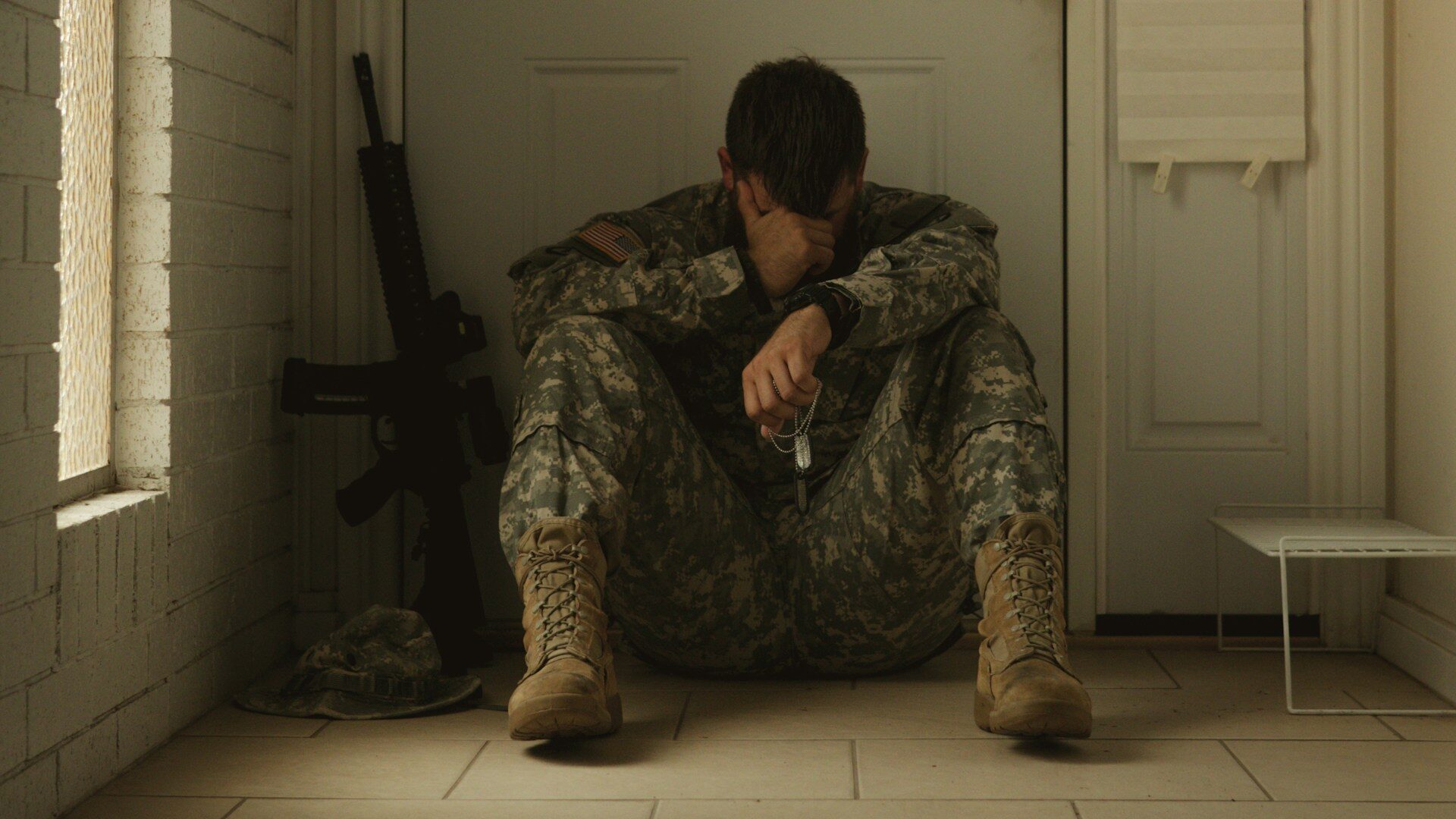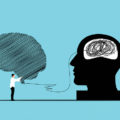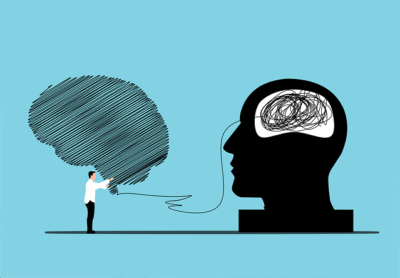Post-Traumatic Stress Disorder (PTSD) is a serious mental health condition that arises after experiencing or witnessing a terrifying event. It affects people across all walks of life – from soldiers and disaster survivors to victims of abuse or accidents. Common triggers include warfare, sexual or physical assault, severe accidents, natural disasters, and even medical emergencies. For example, many combat veterans return home haunted by wartime memories, while survivors of earthquakes or terrorist attacks may relive the horror repeatedly. The core of PTSD is persistent re-experiencing of the trauma, avoidance of reminders, negative emotional changes, and heightened arousal. People with PTSD often suffer vivid nightmares, flashbacks, severe anxiety, guilt, or anger long after the danger has passed. These symptoms can strain daily life, relationships, and work, making even normal routines feel overwhelming.
PTSD is not limited to veterans. It can strike any person who endures extreme trauma – for instance, a survivor of childhood abuse might struggle with trust and safety even decades later. Children, the elderly, and first responders can all develop PTSD. Importantly, it is not a sign of weakness; rather, it is a natural, if debilitating, response to events that overwhelm the human capacity to cope. The brain essentially becomes “stuck” in a state of fight-or-flight, as if the danger is still present. With empathy and treatment, Post-Traumatic Stress Disorder can be managed and even overcome, but understanding its depth is crucial for support and recovery.

Table of contents
- 1 What Is Post-Traumatic Stress Disorder?
- 2. How Did the History of Post-Traumatic Stress Disorder Unfold?
- 3. What Are the Symptoms, Causes, and Diagnostic Criteria of Post-Traumatic Stress Disorder?
- 4. Are There Different Types or Classifications of Post-Traumatic Stress Disorder?
- 5. How Common Is Post-Traumatic Stress Disorder Worldwide?
- 6. Can You Describe Real Cases of Post-Traumatic Stress Disorder?
- 7. What Modern Treatments Are Used for Post-Traumatic Stress Disorder and How Effective Are They?
- 8. What Recovery Strategies and Lifestyle Changes Help People with PTSD?
- 9. What Are Common Myths About Post-Traumatic Stress Disorder?
- 10. Conclusion: Building Understanding and Empathy
1 What Is Post-Traumatic Stress Disorder?
Many people confuse PTSD with normal stress reactions. In fact, brief distress after trauma is common and usually fades. However, PTSD occurs when symptoms persist beyond a month and seriously interfere with life. Clinicians define PTSD by specific criteria: a person must have been exposed to a traumatic event (such as violence or threat of death) and then experience a cluster of symptoms. These include intrusive memories (flashbacks or nightmares), avoidance of anything reminding them of the trauma, negative mood or thoughts (like guilt or numbness), and hyperarousal (jumpiness, insomnia, irritability). All these symptoms must last over a month and cause significant problems at work, in social settings, or with family. In short, PTSD means the trauma continues to cause havoc in one’s mind long after it occurred.
The term “PTSD” emphasizes that the stressor event – not an internal flaw – is the cause of suffering. For example, a bodyguard may immediately spring into action during an attack, but afterward he might feel haunted and on-edge for months, even if physically unharmed. This is not weakness; it is the mind processing a life-threatening shock. Likewise, abuse survivors may feel intense fear or shame replaying in their minds, unwillingly reliving moments they wish they could forget. These experiences cut across cultures and ages. Studies show that only a minority of trauma survivors develop PTSD, but this still amounts to millions globally. According to the World Health Organization, an estimated 3.9% of people worldwide will experience PTSD at some point. That means roughly 1 in 25 people globally may grapple with these symptoms. Knowing this, it becomes clear how important awareness and compassion are for those affected.
2. How Did the History of Post-Traumatic Stress Disorder Unfold?
The history of Post-Traumatic Stress Disorder is long and complex, stretching from ancient observations to modern psychiatric classifications. Empathy for trauma sufferers has grown over centuries, but scientific understanding took time.
2.1 What Were Early Observations of Trauma-Related Stress?
Accounts of war-related trauma date back millennia. Ancient texts like Homer’s Iliad hinted at survivors’ guilt and nightmares. In literature, William Shakespeare described war-torn psyches in Henry IV and Charles Dickens later wrote about trauma symptoms after seeing a horrific train wreck. Clinicians in the 1700s also noted similar patterns. In 1761, Austrian physician Josef Leopold coined the term “nostalgia” to describe soldiers’ homesickness and anxiety after battle. By the American Civil War (1861–1865), doctors recognized “soldier’s heart” or Da Costa’s Syndrome, marked by racing heart and panic. Civil War doctors like Jacob Mendez Da Costa boldly wrote in 1871 about soldiers with overstimulation of the nervous system due to combat. Others speculated on “railway spine” – trauma after train crashes – especially after Charles Dickens himself had a railway accident in 1865. Dickens described nightmares and extreme fear following the crash, noting it was a result of trauma.
By World War I (1914–1918), the term “shell shock” was coined (1915) to explain puzzling symptoms. Soldiers reported panic attacks, trembling, and incoherence after artillery explosions, as if their brains were literally shattered by shells. Initially doctors blamed this on hidden brain injury from blasts, but then noticed anyone exposed to the horrors of the trenches could suffer, even without head wounds. Treatment then was primitive: some patients got shock therapy or were only rested briefly before returning to battle, while others were sent to quiet hospitals for rest and talk therapy. World War I firmly linked psychological trauma to war, even if understanding was incomplete.
2.2 When Did PTSD Become a Recognized Diagnosis?
Despite clear symptoms, official recognition was slow. In 1952, the first Diagnostic and Statistical Manual (DSM-I) included “Gross Stress Reaction” for acute trauma responses. However, this label was dropped by DSM-II (1968), leaving many veterans without a proper diagnosis. It took the activism of Vietnam War veterans, domestic violence survivors, and others in the 1970s to push psychiatry forward. Finally, in 1980 the American Psychiatric Association introduced “Post-Traumatic Stress Disorder” in DSM-III. This new diagnosis acknowledged that trauma can cause long-term psychological injury. It was based on research with Vietnam vets and survivors of rape, torture, and the Holocaust.
Since then, the criteria have evolved. DSM-III-R (1987) and DSM-IV (1994) refined symptoms, adding more details. By DSM-5 (2013), PTSD had four symptom clusters: intrusion, avoidance, negative mood, and arousal, plus a dissociative subtype option. Notably, DSM-5 moved PTSD out of anxiety disorders into a new category “Trauma- and Stressor-Related Disorders”.This reflects growing understanding of trauma’s unique role. In parallel, the World Health Organization’s ICD-11 (2018) introduced Complex PTSD for prolonged trauma and clarified definitions. Today, clinicians recognize Post-Traumatic Stress Disorder as a legitimate and serious condition, with a century of research behind it.
3. What Are the Symptoms, Causes, and Diagnostic Criteria of Post-Traumatic Stress Disorder?
PTSD symptoms fall into four major categories, and understanding them helps both sufferers and supporters recognize the illness.
Symptoms. Individuals with PTSD often suffer unwanted re-experiencing of the trauma. This includes flashbacks (feeling as if the event is happening again), nightmares, or distressing intrusive memories. For example, a firefighter might vividly recall the faces of children he rescued during a blaze every time he closes his eyes, and wake up screaming. Secondly, they engage in avoidance: steering clear of places, people, conversations or activities that trigger memories. A car crash survivor, for instance, may refuse to ride in any vehicle or visit the accident site. Third, there are negative changes in thoughts and mood. A person may feel overwhelming guilt, blame themselves for what happened, develop a lasting sense of fear or hopelessness, or lose interest in previously enjoyed activities. Finally, hyperarousal and reactivity are common: this means being on constant guard. Sufferers startle easily, have difficulty sleeping or concentrating, and may burst into anger or aggression over minor things. If loud noises snap them back into panic mode or they cannot relax without feeling in danger, that is hyperarousal. All these symptoms cause significant distress or impairment in life. They typically begin soon after the trauma but sometimes only appear months later.
These symptoms must last more than one month to meet the PTSD diagnosis. Many clinicians use the mnemonic “RISE” to remember clusters: Re-experiencing, Intrusive distress, Stressful mood, Enhanced arousal. In practice, doctors might check boxes: for instance, one required symptom from re-experiencing, one from avoidance, two from negative mood, and two from hyperarousal, all following a trauma. For example, the official DSM-5 criteria require at least five symptoms across these areas after trauma exposure.
Causes and Risk Factors. The cause of PTSD is the traumatic event itself – anything that is shocking, life-threatening or deeply disturbing. Combat, sexual violence, violent crime, severe accidents, natural disasters, terrorism, torture, or childhood abuse can all trigger PTSD. However, not everyone who experiences trauma develops PTSD. Risk factors make some people more vulnerable. These include a personal or family history of mental illness, childhood trauma, intense or prolonged exposure (e.g. being in a warzone versus just hearing about it), lack of social support, and even biological differences. Brain research shows PTSD often involves a “fear circuit” malfunction. Areas like the amygdala (which triggers fear), the hippocampus (memory processor), and the prefrontal cortex (emotion regulator) function abnormally. For example, PTSD patients often have an over-active amygdala and a shrunk hippocampus, meaning fearful memories stay alive and intrusive【32†】. Certain genes and hormones may also play a role; researchers have found links with stress hormones and neurotransmitters like cortisol and serotonin. Substance abuse or chronic stress before the trauma can worsen outcomes. Ultimately, PTSD arises from the interaction of an extreme event and a vulnerable brain-mind; it is neither pure biology nor pure psychology alone.
Diagnostic Criteria. Formally, a PTSD diagnosis requires: 1) A traumatic event (death, injury, or sexual violence) was experienced directly or witnessed, or even learned about affecting a close relative. 2) At least one re-experiencing symptom (like flashbacks or nightmares). 3) At least one avoidance symptom (avoiding thoughts or reminders of the trauma). 4) Two or more negative mood/cognition symptoms (such as memory gaps, guilt, or detachment). 5) Two or more arousal/reactivity symptoms (e.g., irritability, reckless behavior, hypervigilance, sleep issues).6) Symptoms last over a month (if less than a month, it might be Acute Stress Disorder instead). 7) These symptoms cause significant impairment at work, home, or socially, and are not due to medication or another illness.
When clinicians evaluate someone, they often use structured interviews or questionnaires covering these criteria. For example, a doctor may ask, “Have you had upsetting memories of the event when you didn’t want to?” (intrusion) or “Do you avoid talking about what happened?” (avoidance). The presence of symptoms and their impact on life (like missing school or work) solidify the diagnosis. Importantly, PTSD is distinct from “just” feeling sad or upset. It is a specific pattern tied to trauma. A person may know logically that the event is over, yet still physiologically respond as if it were happening now. That persistent stress reaction is the hallmark.
4. Are There Different Types or Classifications of Post-Traumatic Stress Disorder?
While PTSD itself is one diagnosis, experts recognize variations depending on timing, cause, and symptom pattern. Understanding these types helps tailor treatment to each individual’s needs.
4.1 What Is Complex PTSD vs. PTSD?
Complex PTSD (C-PTSD) is not a separate label in the U.S. DSM, but it is recognized internationally (ICD-11). It arises after prolonged, repeated trauma, often in childhood, such as chronic abuse or captivity. In addition to the usual PTSD symptoms, C-PTSD includes problems with emotion regulation, self-image, and interpersonal relationships. For example, a person with C-PTSD may have chronic feelings of worthlessness, persistent difficulty trusting others, or ongoing flashbacks that feel like a part of their identity. In ICD-11 terms, PTSD and CPTSD are “siblings” under stress disorders: you can have one or the other, but not both. If someone lived in a warzone for years with abuse, C-PTSD might be diagnosed. Symptoms include all PTSD clusters plus at least one symptom in each of three extra domains (affect dysregulation, negative self-concept, relational difficulties). Treatment of C-PTSD generally involves longer-term therapy to address these deeper wounds, often starting with stabilizing skills before processing trauma.
4.2 What Is Acute Stress Disorder?
When PTSD-like symptoms occur right after trauma but are short-lived, clinicians may diagnose Acute Stress Disorder (ASD). By definition, ASD lasts at least 3 days but less than a month following the event. It’s a way to identify and treat severe stress reactions early. Symptoms mirror PTSD (intrusive memories, avoidance, hyperarousal) but the key difference is time. If symptoms resolve within 4 weeks, the diagnosis remains ASD. If they persist beyond one month, it becomes PTSD. Early intervention for ASD – such as immediate counseling or brief therapy – can sometimes prevent full-blown PTSD.
4.3 Are There Other Specifiers (e.g., Dissociative Subtype)?
Yes. Some people with PTSD experience significant dissociation – a feeling of detachment from reality. DSM-5 includes a dissociative subtype for PTSD. These individuals routinely feel unreal (derealization) or perceive themselves outside their body (depersonalization) during or after trauma reminders. They might describe the world as “foggy” or like a “dream.” About 15–30% of PTSD cases may include this subtype. Clinicians note it because treatment may need adjustments; for instance, therapists often spend more time on grounding techniques before traumatic exposure therapy.
4.4 Does PTSD Affect Children Differently?
Children and teens can have PTSD too, but their symptoms can look different. Very young children (under 6) may re-enact the trauma through play, have frightening dreams, or regress in behavior. School-age kids might show increased aggression or clinginess. Older children’s symptoms are closer to adults’ (flashbacks, avoidance, etc.). The diagnosis criteria are adjusted slightly for age. In all cases, the key is to recognize that PTSD can occur at any age and to seek age-appropriate help for children showing these symptoms.
5. How Common Is Post-Traumatic Stress Disorder Worldwide?
PTSD is more common than many realize, though it affects a minority of those exposed to trauma. Globally, around 3.9% of people experience PTSD at some point in their lives. That translates to hundreds of millions worldwide. However, prevalence varies greatly by population and type of trauma. Studies show that about 70% of people will face at least one potentially traumatic event in their lifetime. but only about 5–6% of those (roughly one in twenty) develop PTSD.
Certain situations carry much higher risk. For instance, individuals who endure armed conflict or violent assault see PTSD rates 3–4 times higher than average. One WHO report found that among people exposed to war or terrorism, up to 15.3% develop PTSD. The risk is especially high for survivors of sexual violence; studies indicate a majority of rape or torture victims exhibit PTSD symptoms at some point. In natural disasters or severe accidents, the PTSD rate is lower but still significant (often around 10–20% of survivors).
Demographically, women are roughly twice as likely as men to develop PTSD after similar trauma exposure. For example, U.S. surveys estimate about 6.8% of adults will have PTSD in their lifetime, but broken down, roughly 8% of women versus 4% of men. In a given year, around 3.6% of U.S. adults meet PTSD criteria, with 5.2% of women and 1.8% of men affected. Globally, the same gender gap persists. Factors like sexual assault (which disproportionately affects women) and social support explain much of this difference.
Refugees and displaced people face some of the highest burdens. Surveys of war refugees often show 20–50% meeting PTSD criteria, due to repeated trauma and loss. In contrast, the general population rates remain lower. For example, in peace-time Western countries, PTSD lifetime rates hover around 3–9%. In summary, PTSD affects a significant minority of people, with especially high rates among combat veterans, abuse survivors, and disaster-impacted populations.
6. Can You Describe Real Cases of Post-Traumatic Stress Disorder?
Real-life stories help illustrate how Post-Traumatic Stress Disorder can manifest. Here are some examples (names changed and composite for privacy):
- Case 1: Combat Veteran – “John.” John, a 35-year-old U.S. Army veteran, served two tours in Afghanistan. Months after returning home, he began reliving firefight scenes involuntarily. A car backfire would send him diving under tables, convinced it was gunfire. He suffered nightmares about fallen comrades and often woke sweaty and panicked. John avoided talking about the war and even skipped family gatherings out of fear he might snap at loud voices. He started drinking heavily to sleep and became irritable with his wife and children, fearing someone might break into the house. It wasn’t until John broke down during a friend’s wedding (triggered by fireworks) that he sought help. His detailed case – including flashbacks, avoidance of crowds, survivor guilt, and hypervigilance – matched the full PTSD criteria. Over time, with therapy and medication, John’s symptoms gradually lessened, but the war’s impact on his mind was clearly evident.
- Case 2: Sexual Assault Survivor – “Maria.” Maria, a 28-year-old woman, survived a violent home invasion. For weeks afterward, she felt safe only in her locked bedroom. She started avoiding dark streets and breaking into tears when hearing sirens. Maria developed intrusive memories of the attack: certain smells or the sound of a man’s footsteps would trigger panic attacks. She also struggled with anger and shame, blaming herself irrationally. Even months later, Maria could not form new romantic relationships due to fear and distrust. These ongoing patterns – especially her nightmares, avoidance of dating, and sudden startle responses – exemplify classic PTSD in a civilian context. Over time, therapy helped her realize the assault was not her fault and taught her coping skills, but Maria’s life was profoundly affected by that single traumatic night.
- Case 3: Natural Disaster Survivor – “Aleksei.” Aleksei was a 40-year-old farmer in Eastern Europe when a devastating earthquake struck his village. He survived but lost his home and saw neighbors die in the rubble. In the year following, Aleksei had constant anxiety and insomnia. The sound of cracking wood from building repairs would send him to the floor. He often sat quietly crying at night, feeling guilty that he survived when others did not. Although he returned to farming, he remained emotionally numb around his children and avoided conversations about the quake. Aleksei’s profile – chronic fearfulness, isolation, and depressive symptoms after a natural disaster – is another example of PTSD. It shows that even without violence, overwhelming fear of death can lead to trauma. Aleksei eventually found relief through community support groups with other survivors and by gradually rebuilding his life.
- Case 4: Childhood Trauma – “Lina.” Lina was abused by a family member as a child. Now in her 30s, she still experiences PTSD symptoms. Loud arguments between neighbors make her dive under blankets, and smells like baking bread can trigger flashbacks of her abuser baking cookies to lure her. She has severe trust issues and cannot maintain long-term relationships, feeling unworthy and unlovable. Lina’s complex PTSD shows additional struggles: she feels persistent shame and emptiness, beyond the basic fear and anxiety. Her case highlights how early, repeated trauma creates a chronic, multifaceted PTSD. Lina has spent years in therapy learning to set boundaries and rebuild self-worth, demonstrating that even decades-old trauma can be addressed.
These stories demonstrate PTSD’s range. The causes differ – war, assault, disaster, abuse – but the feelings of terror, helplessness, and ongoing stress link them. Each person had intrusive reminders, avoidance behavior, and mood changes disrupting daily life. Importantly, they also show recovery is possible: with treatment and support, each began to regain control. By recognizing such real cases, we understand that Post-Traumatic Stress Disorder is both a genuine medical condition and a shared human experience for many.
7. What Modern Treatments Are Used for Post-Traumatic Stress Disorder and How Effective Are They?
Effective treatment of PTSD often combines therapy and medication, tailored to the individual’s needs. Below are major approaches:
7.1 Trauma-Focused Cognitive Behavioral Therapy (TF-CBT)
TF-CBT is a form of talk therapy that helps patients process trauma and change unhelpful thoughts. It usually follows a step-by-step process:
- Psychoeducation: The therapist first explains PTSD and normalizes symptoms, reducing patients’ fear of “going crazy.”
- Skills Training: Patients learn coping skills such as relaxation, breathing exercises, and stress management.
- Exposure: In a safe environment, the patient gradually confronts memories or reminders of the trauma. For example, a veteran might slowly work through military images, or a car accident survivor might sit in a car, all while managing anxiety.
- Cognitive Restructuring: The therapist helps the patient challenge and reframe negative beliefs. For instance, if someone believes “I am permanently damaged,” they practice replacing it with more balanced thoughts like “This experience was horrific, but I am stronger than I realize.”
- Reintegration: The final goal is helping the patient reintegrate into normal life, using the new coping skills and confidence gained.
TF-CBT has strong evidence of effectiveness. Numerous studies and guidelines recommend it as a first-line treatment. Research shows patients often experience a 50–80% reduction in PTSD symptoms after a course of TF-CBT. Many report fewer flashbacks, less avoidance, and improved mood over time. This therapy works best when the patient is willing to revisit the trauma memory with support. It can be done individually or in some cases in groups.
7.2 Eye Movement Desensitization and Reprocessing (EMDR)
EMDR is a specialized therapy that uses bilateral stimulation (usually eye movements) while the patient focuses on traumatic memories. A typical EMDR session involves:
- Identifying a vivid memory or image related to the trauma and the emotions it evokes.
- The patient recalls this memory while following the therapist’s finger as it moves back and forth, or alternately listens to rhythmic sounds in each ear.
- The therapist monitors and guides the process, helping the patient notice new insights or lessen the emotional intensity.
EMDR’s theory is that the eye movements help the brain reprocess the trauma in a way similar to how memory is processed during sleep. Over several sessions, the memory often becomes less distressing.
EMDR is also shown to be very effective – comparable to TF-CBT. Many veterans and abuse survivors report quick relief using EMDR. In fact, it is now recognized by health authorities worldwide as an effective, evidence-based PTSD treatment. For many, EMDR can process trauma faster than traditional talk therapy, especially when verbalizing memories is difficult.
7.3 Pharmacological Treatments (Medications)
Medication is another cornerstone of PTSD treatment. The most commonly prescribed drugs are certain antidepressants, particularly SSRIs (selective serotonin reuptake inhibitors) such as sertraline and paroxetine. These medications were specifically approved for PTSD after trials showed they reduce symptoms in 50–60% of patients.
- How they work: SSRIs increase levels of serotonin in the brain, which can improve mood and anxiety. For PTSD patients, they may ease hyperarousal and negative mood, reduce flashbacks, and help improve sleep over time. Patients usually take these daily for several months.
- Effectiveness: SSRIs generally show moderate to good efficacy. They may not eliminate symptoms entirely, but many people experience significant relief. It often takes 4–6 weeks to see benefits. Other antidepressants like SNRIs (e.g., venlafaxine) are also used with similar results.
- Other medications: Sometimes, additional drugs help with specific symptoms. For example, prazosin (a blood pressure medicine) is used off-label to treat PTSD-related nightmares by blocking adrenaline effects at night. Benzodiazepines (like Xanax) were once used for anxiety, but they are now used cautiously or avoided, because they can interfere with therapy and have dependency risks. Medications can be combined with therapy: for example, taking sertraline while undergoing CBT often yields better outcomes than either approach alone.
7.4 Other Approaches
- Group therapy: Some patients benefit from support groups or group CBT, sharing experiences with others who have PTSD. This can reduce isolation and stigma.
- Family therapy: Involving family or close friends can help improve the patient’s support network and address relationship strains caused by PTSD.
- Virtual Reality Exposure: A newer method uses VR goggles to safely immerse veterans in combat-like scenarios under therapist guidance. Early studies show it helps some patients desensitize to triggers in a controlled way.
- Innovative treatments: Research is ongoing into treatments like MDMA-assisted therapy or neurostimulation, but these are not yet standard.
In summary, the most effective treatments for PTSD have been trauma-focused psychotherapies (CBT, EMDR) often combined with medications (SSRIs). Treatment plans are individualized: what works well for one person may differ for another. Importantly, recovery usually involves gradual improvement. According to some data, up to 40% of people with PTSD recover significantly within a year with proper care. and many more improve over longer treatment. There are no quick fixes, but with professional help, the majority of PTSD sufferers can regain control over their lives.
8. What Recovery Strategies and Lifestyle Changes Help People with PTSD?
Beyond formal therapy and medication, several self-care and lifestyle strategies can support recovery from PTSD. These are backed by research and experts as helpful complements:
- Strong Social Support: Feeling connected and supported is crucial. Studies show that having caring family, friends, or a community greatly reduces PTSD risk and aids recovery. Joining support groups (veteran groups, survivor networks, therapy groups) lets people share experiences without judgment. Loved ones can encourage attending treatment and provide safe environments to open up. Simple gestures of kindness—listening without judgment—make a big difference.
- Mindfulness and Meditation: Practices like mindfulness meditation, deep breathing, and relaxation exercises help calm the nervous system. Research indicates mindfulness can reduce rumination and negative emotions in PTSD patients. For example, a daily meditation routine or yoga practice encourages living in the present moment, which counteracts the cycle of intrusive memories. Many find that even 10 minutes of focused breathing each day lowers anxiety levels and improves sleep.
- Physical Exercise: Regular aerobic exercise is a powerful stress reliever. Exercise releases endorphins (natural mood boosters) and can reduce hyperarousal. Studies have found that moderate exercise (e.g., jogging, cycling, or even brisk walking) over weeks can significantly lessen PTSD symptoms. Some programs incorporate boxing or martial arts to give survivors a sense of empowerment and bodily release of tension.
- Healthy Sleep Habits: PTSD often wreaks havoc on sleep. Improving sleep hygiene can aid recovery. Suggestions include keeping a regular sleep schedule, making the bedroom restful (cool, dark, and quiet), and avoiding screens or caffeine before bed. Since nightmares are common, some survivors use relaxation techniques or write down the nightmare and imagine changing its ending before sleep. Adequate sleep stabilizes mood and strengthens cognitive processing of trauma.
- Balanced Routine and Purpose: Having a daily routine provides stability. Setting small goals—like finishing a book or fixing something at home—can create a sense of achievement. Engaging in meaningful activities (hobbies, volunteering, creative work) helps rebuild identity beyond the trauma. Some survivors find purpose-driven work (helping other survivors, advocacy, animal care) healing, as it turns painful experiences into motivation to help others.
- Nutrition and Substance Avoidance: A well-balanced diet supports brain health. Omega-3 fatty acids (in fish or supplements) and complex carbohydrates can stabilize mood. Importantly, avoiding alcohol and drugs is vital: while these substances may temporarily numb pain, they worsen anxiety and disrupt brain chemistry over time. Cutting down or quitting substances prevents a vicious cycle of dependency and symptom flare-up.
- Additional Therapies: Creative therapies like art, music, or equine therapy can provide non-verbal outlets for emotions. For example, expressing feelings through painting or music can reach deep scars in a less direct way. Martial arts and bodywork (like massage, acupuncture) also show promise in helping trauma survivors reconnect with their bodies and release stored tension.
Incorporating these strategies takes effort, but even small steps can improve resilience. For instance, mindfulness apps make meditation accessible, while group fitness classes add a social element to exercise. Over time, survivors often find that lifestyle improvements not only reduce PTSD symptoms but also enhance overall well-being. The key is consistency: gradually building these habits can create new, positive neural pathways that counterbalance the trauma-based ones.
9. What Are Common Myths About Post-Traumatic Stress Disorder?
Despite growing awareness, many misconceptions persist about PTSD. Here are some common myths debunked:
- Myth: “Only military veterans get PTSD.”
Reality: PTSD can happen to anyone. While combat exposure is a well-known cause, so are natural disasters, accidents, assaults, and other traumas. For example, survivors of sexual abuse or witness to a crime may develop PTSD. Millions of civilians worldwide suffer from PTSD with no military connection. - Myth: “PTSD is a sign of weakness; you should just get over it.”
Reality: PTSD is not a character flaw. It is a real medical condition caused by extreme stressors. Suggesting someone “toughen up” only increases their shame. In truth, PTSD reflects the brain’s struggle to cope with overwhelming events, and it often proves how strong a person had to be to survive in the first place. - Myth: “If I can’t remember the event clearly, I don’t have PTSD.”
Reality: Memory gaps are common in PTSD. Severe trauma can disrupt normal memory formation. People often have fragmented or spotty recall of what happened. Paradoxically, it’s possible to have intense emotional reactions to triggers even without a clear conscious memory of the trauma. - Myth: “PTSD is permanent; nothing will ever help.”
Reality: With help, many people recover significantly. About 4 in 10 people recover within a year with treatmentwho.int. Even chronic PTSD can be managed with therapy. Treatments like CBT and EMDR often yield major improvements. While scars remain, most survivors learn coping skills that allow a fulfilling life. - Myth: “People with PTSD are violent or dangerous.”
Reality: The stereotype of the “angry vet” is misleading. PTSD can involve anger, but it more often leads to inward suffering (depression, anxiety) than outward aggression. Most people with PTSD are more likely to harm themselves (through substance abuse or suicide) than others. In fact, understanding PTSD can reduce stigma; people need support, not fear. - Myth: “It’s too late to treat old trauma.”
Reality: Trauma can be healed at any age. Therapies have helped people decades after the event. The brain remains capable of change throughout life. Seeking treatment is worthwhile no matter how long it’s been. - Myth: “Talking about it will only make it worse.”
Reality: Carefully guided discussion helps recovery. A skilled therapist knows how to safely explore painful memories. Addressing trauma (rather than avoiding it) is key to reducing its power. Of course, this is done gradually and with consent; forcing rapid confrontation would be harmful.
Recognizing and correcting these myths is important. Dispelling them encourages empathy and prompts those suffering to seek help. PTSD is a medical response to trauma, not a personal weakness. Communities that understand this can offer the compassionate support that aids healing.
10. Conclusion: Building Understanding and Empathy
Post-Traumatic Stress Disorder is a complex and deeply human reaction to extreme trauma. We have seen how diverse victims – soldiers, survivors of violence, accident victims, refugees, children – can all be affected. Its symptoms reach into many parts of life, but they are real and treatable. Importantly, nobody chooses PTSD and nobody “should have to deal with it alone.”
We’ve explored PTSD’s history from ancient “nostalgia” to today’s diagnostic criteria, its core symptoms and causes, the types of trauma response, and who it affects worldwide. We reviewed real cases illustrating its impact, and surveyed the latest treatments – evidence-based therapies and medications that genuinely help most sufferers. We also shared practical strategies anyone can use: strengthening social bonds, using mindfulness, exercising, and keeping a healthy routine to support recovery. By debunking myths, we hope to replace stigma with solidarity.
For people with PTSD, the road can be hard, but it is not walked alone. Family, friends, and professionals play crucial roles. As a society, we can foster empathy by listening without judgment, learning about trauma, and advocating for resources. An encouraging fact is that many do improve: research shows that with proper care, the brain can form new, healthier patterns to replace the trauma response.
Ultimately, Post-Traumatic Stress Disorder calls for our understanding and compassion. It reminds us that the boundaries between “normal” and “traumatized” can shift unexpectedly for any of us. By spreading awareness, supporting affected individuals, and believing in the possibility of recovery, we help turn wounds into hope. Each life touched by PTSD is a person’s life still worth celebrating and supporting.
| Symptom Category | Examples |
|---|---|
| Intrusive memories | Flashbacks, nightmares, distressing images |
| Avoidance | Evading reminders (places, conversations) |
| Negative mood/cognition | Guilt, hopelessness, memory gaps, isolation |
| Hyperarousal | Startle, agitation, insomnia, anger |
references
- American Psychological Association. Posttraumatic stress disorder. APA.org (n.d.) American Psychological Association
- National Institute of Mental Health. Post-Traumatic Stress Disorder (PTSD) Statistics. NIMH.nih.gov (n.d.)
- World Health Organization. Post-traumatic stress disorder Fact Sheet. WHO.int 2024 World Health Organization (WHO)
- National Institute for Health and Care Excellence. Post-traumatic stress disorder: recognition and management (NG116). NICE.org.uk 2018
- WHO Eastern Mediterranean Regional Office. PTSD Fact Sheet. WHO EMRO 2023
- U.S. Department of Veterans Affairs. PTSD and DSM-5. PTSD.VA.gov Last updated March 25, 2025 VA.gov | Veterans Affairs
- De Bont et al.. Eye Movement Desensitization and Reprocessing therapy for PTSD and psychotic disorders. PubMed 2023 PubMed
- Raskind MA et al.. Trial of Prazosin for Post-Traumatic Stress Disorder in Military Veterans. NEJM.org 2018 New England Journal of Medicine
- Rosenbaum S et al.. Aerobic Exercise Reduces Symptoms of Posttraumatic Stress Disorder. PubMed 2014 PubMed
- Polusny MA et al.. Mindfulness-Based Stress Reduction for PTSD in U.S. Veterans: A Multisite RCT. PubMed 2018 PubMed
- National Institute of Mental Health. Traumatic Events and PTSD. NIMH.nih.gov (n.d.)
- U.S. Department of Veterans Affairs Research Currents. Drug used for PTSD nightmares falls short in large VA trial. Research.VA.gov 2018














